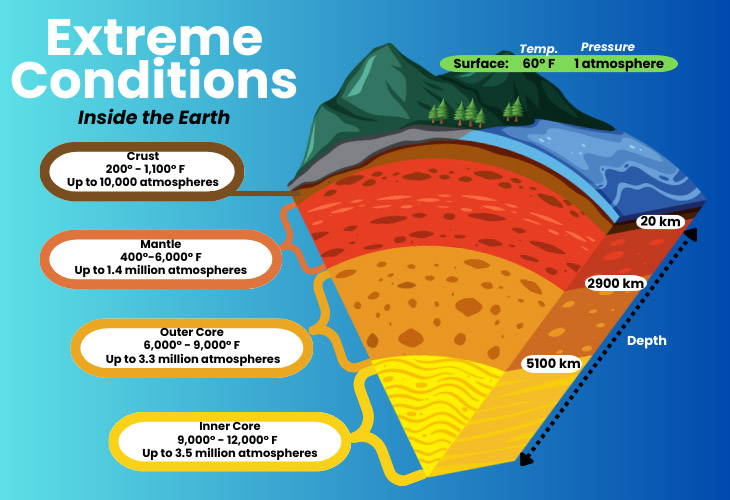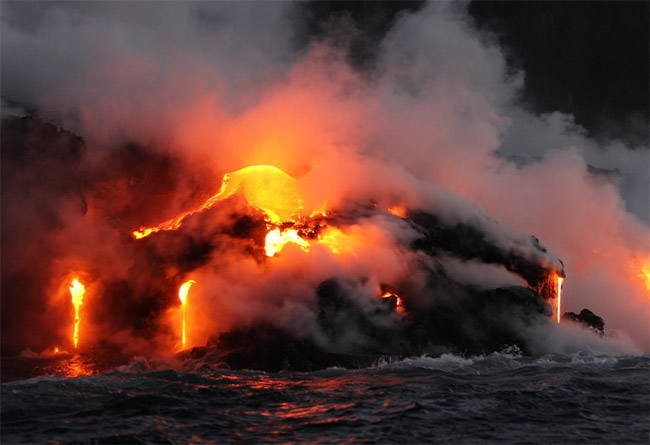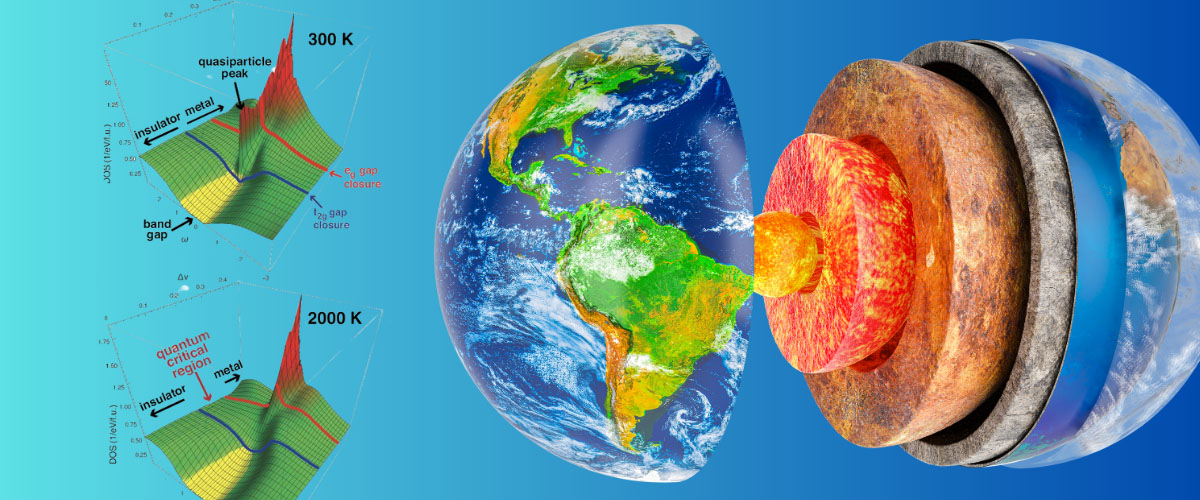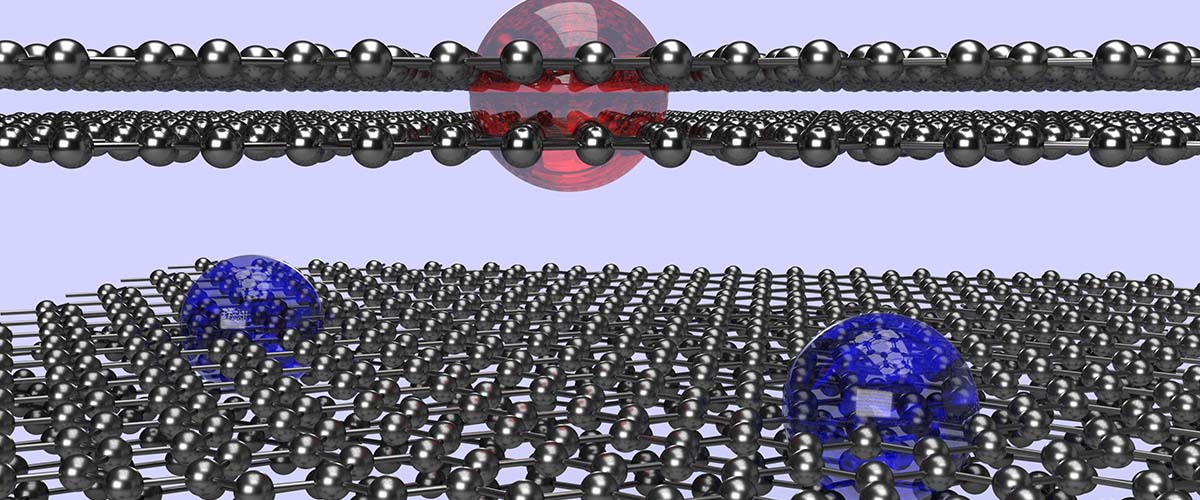Contact: Vlad Dobrosavljevic
TALLAHASSEE, Fla. — Scientists at the National High Magnetic Field Laboratory who study materials' electronic properties are applying their techniques at a colossal scale to help solve a puzzle deep within the Earth.
A research team lead by graduate research assistant David Ho and Florida State University physics professor Vlad Dobrosavljevic has discovered how one mineral may play a role in conducting heat from the Earth's core toward the surface.
"Under extreme conditions things happen that you wouldn't expect, and this is an example of extreme conditions," said Dobrosavljevic.
As you move from the surface deeper into Earth's semi-solid mantle toward the liquid outer core, conditions become intense. Temperatures climb to about half as hot as the surface of the sun. And pressure spikes to 1200 times what's found in the deepest parts of the ocean.

It's under these conditions where the team discovered unusual properties in iron monoxide, a mineral believed to be abundant in some spots along the mantle-core boundary.
"These properties stand out when compared to all the other minerals that we know exist down deep beneath the earth," said Ho.
Using geological data and theoretical modeling, the researchers found that near the boundary between Earth's mantle and outer core, iron monoxide enters what's called a quantum critical state, where it has properties of both an insulator and a conductor.
"A transition zone between the mantle and the core is where this is happening," said Ho. "This can provide an avenue for heat to escape from the core and make its way up through the mantle and towards the surface," he explained.
The researchers believe iron monoxide may serve as a sort of gatekeeper between Earth's core and mantle. A critical finding because when that gate opens and heat escapes, it can impact life on the surface.
"If it can make it to the surface, it can cause tectonic motions, it can cause volcanoes, earthquakes, and it can also affect the magnetic field of the Earth," said Dobrosavljevic.
"There are heat plumes coming from that core-mantle boundary towards the surface just under Hawaii. And we believe this is caused by these mountain-sized regions of iron monoxide which conduct just enough to allow the heat to escape and to cause a volcano," he explained.

The research team believes these findings are crucial for understanding the properties of Earth's deep mantle and its impact on the planet.
"Under some extreme conditions, you'll get really big surprises where even at very high temperatures, you can reveal quantum effects," Dobrosavljevic said, "The pressure is a key factor, we think, in making that possible at the higher temperatures."
Dobrosavljevic began the analysis of iron monoxide working with his son, Vasilije, a mineral physicist at the Carnegie Institution for Science who previously earned his doctorate at Caltech. Vasilije studies the connections between atomic-scale physical properties and planetary-scale geophysical processes.
"We realized that, together with the research group from Caltech, the physical problems and issues that we have been studying in solid state physics at the MagLab can be applied to understand properties of materials deep within the earth," said Vlad. "The Earth is just a giant physical system."
The findings were recently published in Nature Communications and highlighted in the "News and Views" section of Nature Physics. Now, the team is turning to new questions raised by the study, working to get a better grasp of iron monoxide’s exotic properties and what they may mean for all of us here above ground.
"We still don't know a lot about what's going on inside the Earth, right at these depths and pressures and temperatures between the core and the mantle," said Dobrosavljevic.
Using cutting-edge physics to examine those extreme depths, pressures and temperatures, who knows what other surprises may await.






